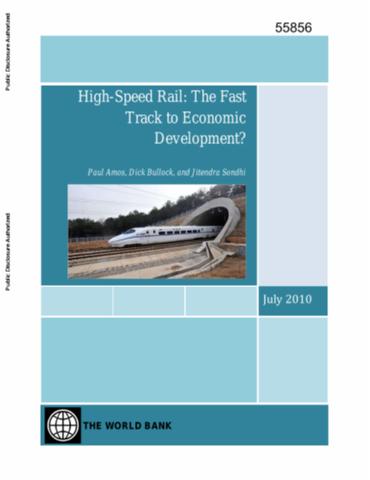Resource information
A high-speed rail service can deliver competitive advantage over airlines for journeys of up to about 3 hours or 750 km, particularly between city pairs where airports are located far from city centres. One suitable type of corridor is that which connects two large cities 250-500 km apart. But another promising situation is a longer corridor that has very large urban centres located, say, every 150-300 km apart. On these longer corridors, typical of some being built in China, high-speed rail has the ability to serve multiple city-pairs, both direct and overlapping. The overall financial performance of high-speed train services depends on enough people being able to pay a premium to use them. In Japan there is a surcharge for high-speed rail which doubles the fare on conventional services. China high-speed train fares are about three times conventional train fares. But in order to generate the required volume of passengers it will usually be necessary not only to target the most affluent travelers but also to adopt a fare structure that is affordable for the middle income population and, if any spare capacity still exists, to offer discount tickets with restrictions on use and availability that can fill otherwise unused seats. The combination of supportive features that exist on the eastern plains of China including very high population density, rapidly growing disposable incomes, and the prevalence of many large cities in reasonable proximity to one another (creating not just one city-pair but a string of such pairs) are not found in most developing countries. Nor could all countries assemble the focused collective capacity building effort and the economies of scale in construction costs that arise when a government can commit the country, politically and economically, to a decades-long program over a vast land area. Even in China, the sustainability of railway debt arising from the program as it proceeds will need to be closely monitored and payback periods will not be short, as they cannot be for such "lumpy" and long-lived assets. But a combination of those factors that create favorable conditions of both demand and supply comes together in China in a way that is distinctly favorable to delivering a successful high-speed rail system.


